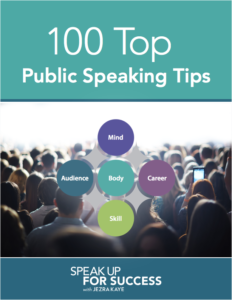 When corporations do wrong, they often blow their apologies.
When corporations do wrong, they often blow their apologies.
An example: After the deadly Deepwater Horizon oil spill in 2010, the Chairman of BP, which was responsible for untold damage, famously said, “I want my life back” and — wait for it! — “We care about the small people.”
Well, we “small people” can do better! Here’s how to make sure that your apology is sincere and straightforward, and brings satisfaction to both parties, no matter what happened.
Your Basic Apology

As with most communications, this one falls neatly into three sections:
1. Clearly state what you’re sorry for.
- Examples: “I’m sorry I yelled at you,” or “I’m very sorry that I didn’t mention you when I accepted my Tony award.”
Why This is Important: The thing you regret may not be what upset or offended the other person (if, in fact, they’re upset at all). Being specific is a courtesy to them, and also insures that your apology actually addresses the hurt they feel.
2. If you’re truly close to the other person, you can make a very brief, factual statement of what led to your error.
- Examples: “I was scared when you didn’t come home on time,” or “I was so excited I couldn’t think straight.”
Why This is Important: Someone who loves you and wants to understand you better might benefit from an apology with context. If you forgot their name because you were flustered, or yelled because you were frightened, those might be valuable points of information; but they shouldn’t be offered as excuses. (And if you’re trying to make excuses, you’re not ready to apologize yet!)
DO NOT, however, include this information in an apology to a co-worker, someone you don’t know well, someone you’ve gravely harmed, or anyone with less power (social standing) than you. In those cases, trying to explain what why you did or said makes the apology be about you—what you felt, what you did, how embarrassed you are at having made a mistake—and that doesn’t alleviate the hurt you’ve caused. In fact, “centering yourself” in this way can actually cause more damage, for example, if you’re a white person apologizing to a person of color, because it implies that you’re the only person in this interaction whose feelings count.
3. Say what you will do better, and ask what the other person would like you to do to “make repair.”
- Examples: “Next time I’ll try to say that I’m scared, instead of yelling. Will that help?” or “I’d like people to know that I couldn’t have won the Tony without you, and I’m going to start writing letters today to say so.”
Why This is Important: In many cases, the vision of what could have gone (or will go) differently is the only amends you can offer. However, if you’ve done harm that can be repaired in the real world, make sure you commit to fixing things.
And if something more seems needed at this point, try saying “I’m sorry” again.
The Strategic Apology: When You “Haven’t Done Anything Wrong”
Even when you stand by your actions, you can apologize with grace for their impact. Be sure, though, to avoid dismissing the other person’s experience with a comment like “I’m sorry about whatever you think I did.” (Ouch!)
Instead, stick with what you do regret, with words like, “I’m truly sorry that my actions/comment/attitude hurt you.” Once you’ve said that, stop talking, so that the next thing out of your mouth is not the dreaded word but, which cancels any apology, or the word if, which makes it sound like you’re not really taking responsibility.
Honoring someone else’s feelings doesn’t make you weak, or a bad person; it makes you principled. It also might mend a relationship, or make another person’s day go better.
And even if you can’t fix everything, those are worthwhile things for an apology to accomplish.

 Buy 100 Top Public Speaking Tips: The Book!
Buy 100 Top Public Speaking Tips: The Book!
In 25 years of speaker coaching, I’ve helped my individual speaker coaching clients develop their strengths and skills to become authentic and effective communicators.
Along the way, I’ve developed tips for everything from small talk to speaking up in meetings, from managing fear to making an impact.
And now, I’ve shared it all in 100 Top Public Speaking Tips: The Book. This beautifully designed PDF booklet is searchable, clickable, and categorized, so that you can find what you need, instantly.
